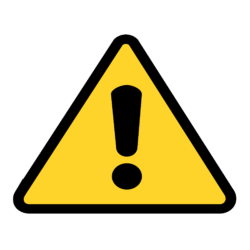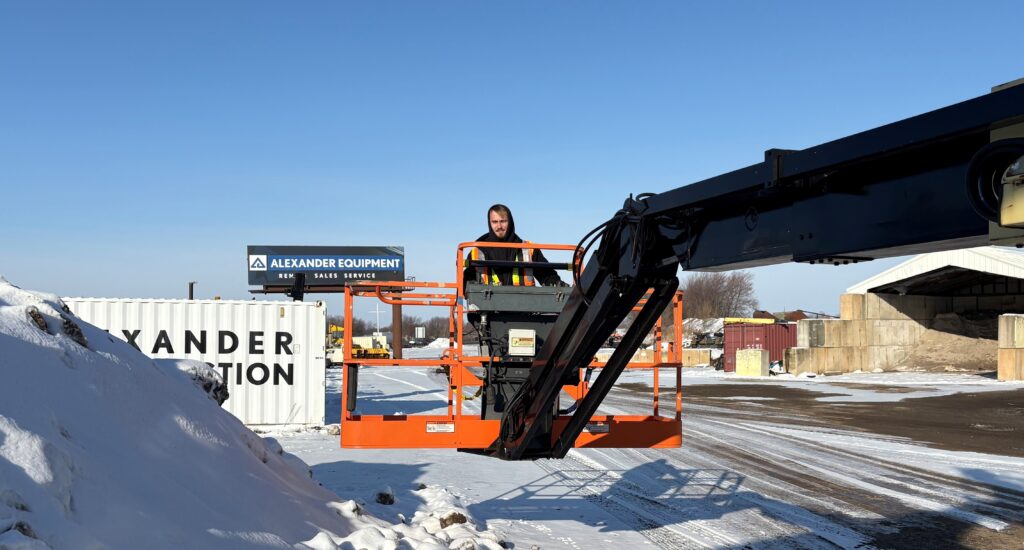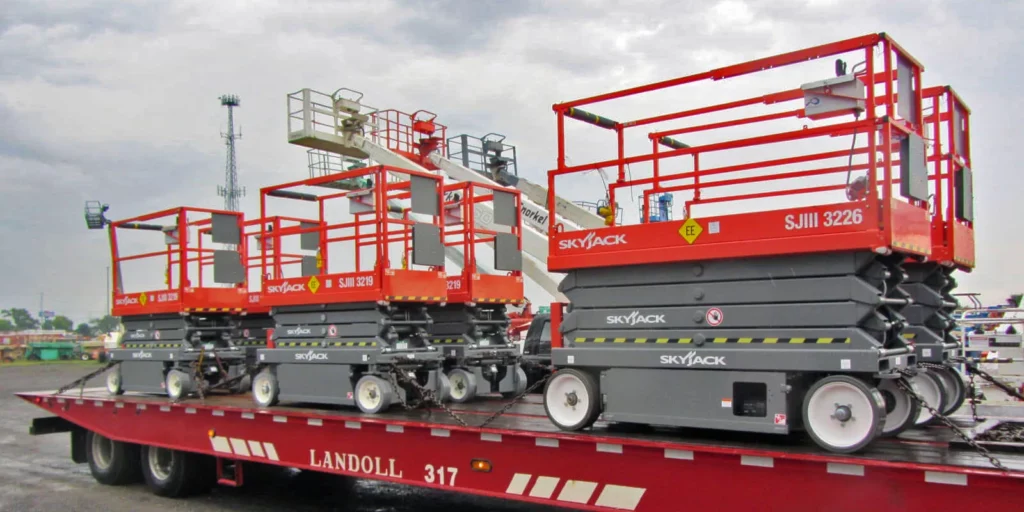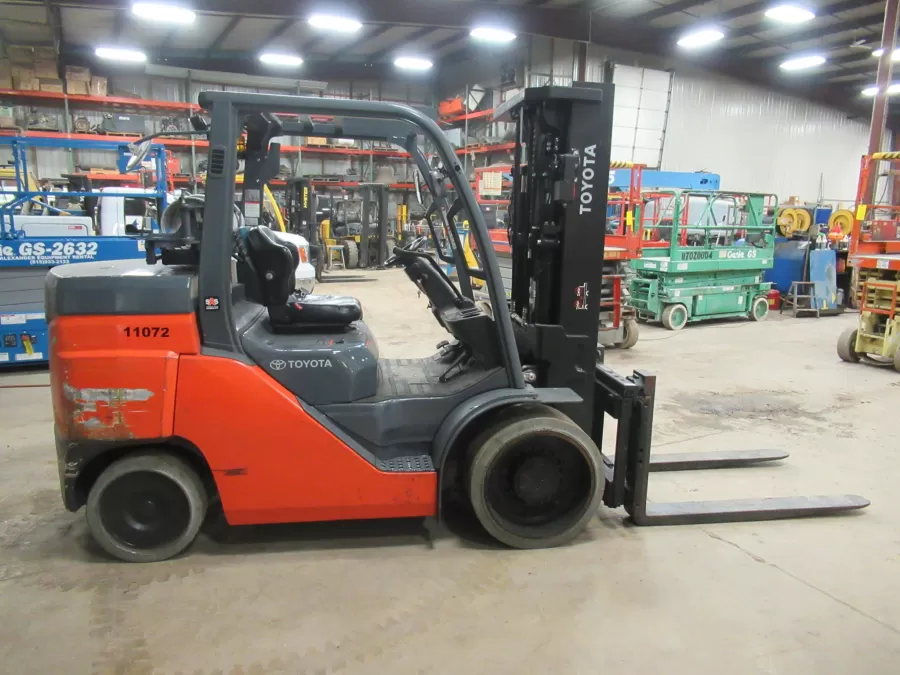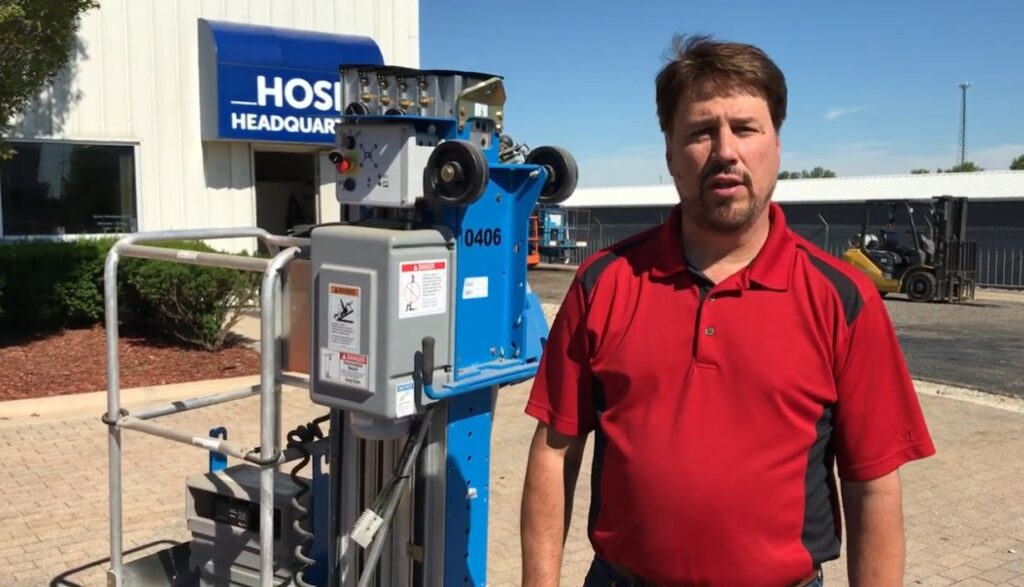Aerial Lift Safety: 5 Key Rules
These principals, when followed in sequence, will help you operate the MEWP (Mobile Elevating Work Platform) safely and efficiently whenever you perform work using a boom lift, scissor lift or vertical mast lift.
The operator’s manual specific to the make and model of the machine to be operated, is organized around these principals. Let’s break these rules down one by one and discuss each in more detail.
1. Avoid hazardous situations
To avoid hazardous situations, we must first identify them. The hazards associated with aerial lift operation can be found in the safety section of the operator’s manual specific to the make and model of MEWP to be operated and on safety decals located on the machine. They include but are not limited to Tip Over, Fall, Collision and Electrocution. Every operator must read and understand the appropriate operator’s manual you will be using before operating the machine. You need to understand and avoid all hazards through every phase of machine testing, inspection and operation. It is absolutely necessary that the operator’s manual, along with the ANSI Manual of Responsibilities and any other manual delivered with the machine by the manufacturer, is located in the weatherproof compartment on the machine, and in readable condition at all times.
2. Always perform a pre-operation inspection
The Pre-Operation Inspection is a visual, walk around inspection designed to determine if anything is apparently wrong prior to moving the machine. It is every operator’s responsibility to perform the Pre-Operation inspection every time they intend to operate the aerial lift. That means if different operators are required to use the machine at different times during the same work shift, they must all be qualified operators and must perform their own Pre-Operation Inspection. You are looking for things like physical damage, loose or missing parts, tire condition and leaks. There is a comprehensive Pre-Operation Inspection check list located in the operator’s manual. If damage or any variation from factory delivered condition is discovered during this inspection, notify your supervisor immediately. It must be tagged and removed from service till repairs can be made by a qualified service technician.
3. Always perform function tests prior to use
The Function Tests are designed to discover if any operational control or safety device is malfunctioning before operating the machine. There is a step-by-step, detailed Function Test check list located in the operator’s manual. The operator is required to test all machine functions following these instructions. A malfunctioning MEWP must never be used. If any malfunctions are discovered, the machine must be tagged and removed from service till repairs can be made by a qualified service technician. Once repairs are complete, the operator must go back and perform a Pre-Operation Inspection again before going on to the Function Tests.
4. Inspect the workplace
The Workplace Inspection helps the operator to determine if the work site is safe for aerial lift operation. It should be performed by the operator prior to moving the machine to the work site. This inspection includes the travel route to where work is needed. We need to first determine if the surface to be traveled on is capable of supporting the weight of the machine. You are looking for things like drop offs, potholes, debris and other material on the ground or floor as well as overhead obstructions, overhead electric conductors, wind and unsafe weather conditions when working outside, personnel working in the area and other vehicles that may be operating nearby. There are other things to look for, so be sure to consult the operator’s manual for other workplace inspection safety concerns. It is every operator’s responsibility to read and remember the workplace hazards then watch for and avoid them while moving, setting up and operating the machine.
5. Only use the machine as it was intended
The operating instructions section of the operator’s manual specific to the make and model of aerial lift to be operated will give instruction for each aspect of aerial lift operation. It is the operator’s responsibility to follow all safety rules in the operator’s and any safety manuals provided by the manufacturer. Unless specifically allowed in the operator’s manual, aerial lifts should not be used for lifting anything other than personnel, and light tools up to where work is needed. Generally, these machines are not intended to lift material. Anything in the platform that increases the surface or sail area will greatly decrease machine stability.
OSHA provides the following Fact Sheet to help employers and workers recognize and avoid safety hazards when operating aerial lifts.

